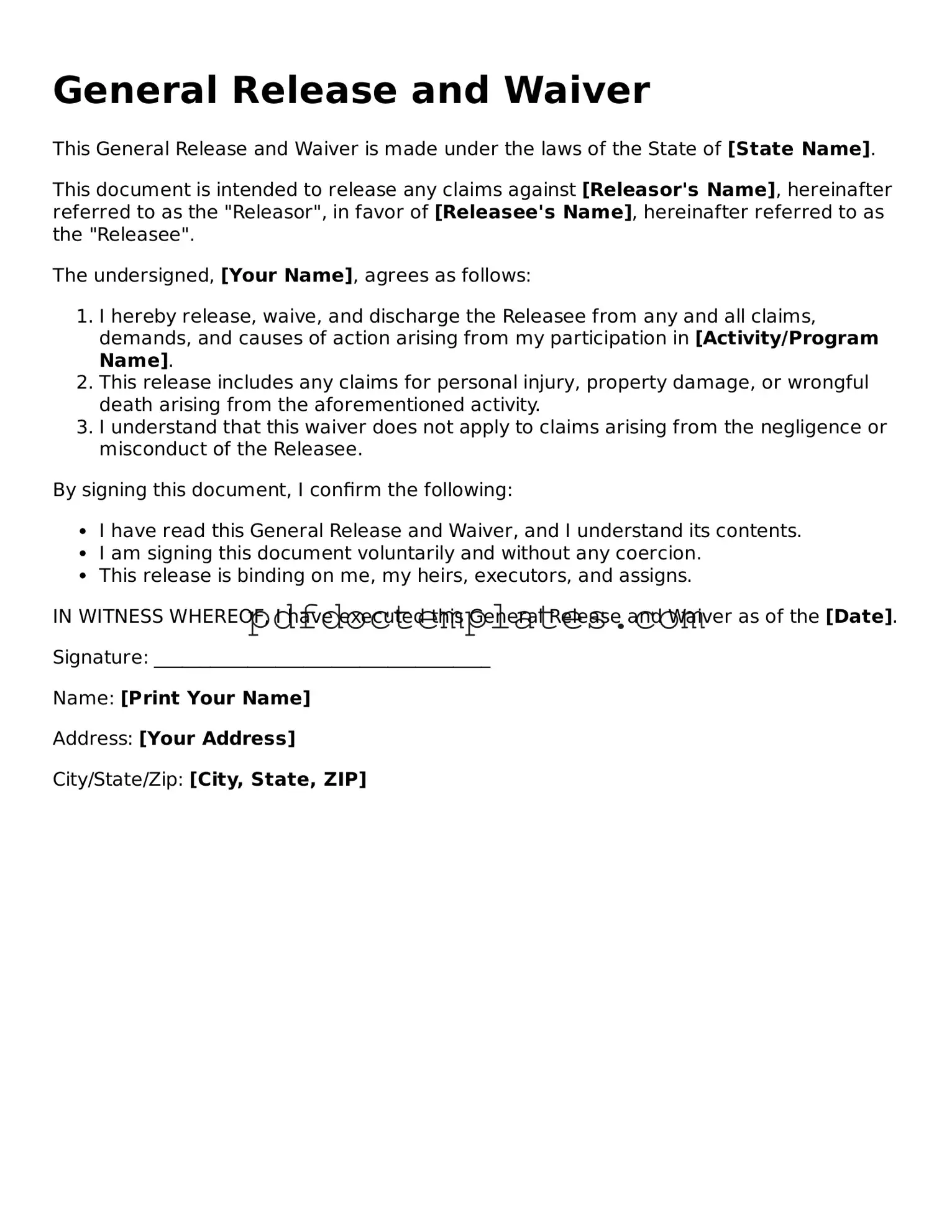General Release and Waiver
This General Release and Waiver is made under the laws of the State of [State Name].
This document is intended to release any claims against [Releasor's Name], hereinafter referred to as the "Releasor", in favor of [Releasee's Name], hereinafter referred to as the "Releasee".
The undersigned, [Your Name], agrees as follows:
- I hereby release, waive, and discharge the Releasee from any and all claims, demands, and causes of action arising from my participation in [Activity/Program Name].
- This release includes any claims for personal injury, property damage, or wrongful death arising from the aforementioned activity.
- I understand that this waiver does not apply to claims arising from the negligence or misconduct of the Releasee.
By signing this document, I confirm the following:
- I have read this General Release and Waiver, and I understand its contents.
- I am signing this document voluntarily and without any coercion.
- This release is binding on me, my heirs, executors, and assigns.
IN WITNESS WHEREOF, I have executed this General Release and Waiver as of the [Date].
Signature: ____________________________________
Name: [Print Your Name]
Address: [Your Address]
City/State/Zip: [City, State, ZIP]
